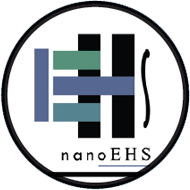
The nanoEHS workshops were organized as part of a larger plan to coordinate nanotechnology EHS research. During the four workshops, industry, academic, and Federal Government experts deliberated on nanoEHS developments and the current state of science, and identified gaps in the research.
The first report, Human and Environmental Exposure Assessment, is organized around resesearch needs presented by the 2008 NNI interagency EHS Research Strategy: characterize exposure among workers, identify population groups and environments exposed to engineered nanoscale materials, characterize exposure to the general population from industrial processes and industrial and consumer products containing nanomaterials, characterize health of exposed populations and environments, and understand workplace processes and factors that determine exposure to nanomaterials. Newly identified needs are also presented.
The second report, Nanomaterials and the Environment & Instrumentation, Metrology, and Analytical Methods, outlines themes that emerged from the second workshop: develop new methods for detecting and tracking engineered nanomaterials in the environment, understand transformation mechanisms and key transformation products, develop reference materials for benchmarking and calibration, ensure that existing regulatory test protocols for environmental effects of materials are adequate for evaluating the environmental effects of engineered nanomaterials, determine the effects of engineered nanomaterials at a higher level of complexity, understand exposure as it relates to determining environmental risk, develop models that can predict engineered nanomaterial fate, distribution, exposure routes, transformations, and interactions with organisms and ecosystems, and post-release life cycle analyses.
The third report, Nanomaterials and Human Health & Instrumentation, Metrology, and Analytical Methods, is based on three overarching EHS research need areas: characterization of engineered nanomaterials, in vitro research and related instrumentation and metrology, and in vivo research and related instrumentation and metrology. Five human health research needs and five instrumentation, metrology, and analytical methods research needs were assigned into these three overarching EHS research need areas.
The fourth report, Capstone: Risk Management Methods & Ethical, Legal, and Societal Implications of Nanotechnology, reports on the findings of the fourth workshop. The workshop focused on identifying available and needed risk management methods and advancing and widening NNI and public knowledge on ethical, legal, and societal implications of nanotechnology.
PDF File Downloads
Human and Environmental Exposure Assessment
Nanomaterials and the Environment & Instrumentation, Metrology, and Analytical Methods
Nanomaterials and Human Health & Instrumentation, Metrology, and Analytical Methods
Capstone: Risk Management Methods & Ethical, Legal, and Societal Implications of Nanotechnology
